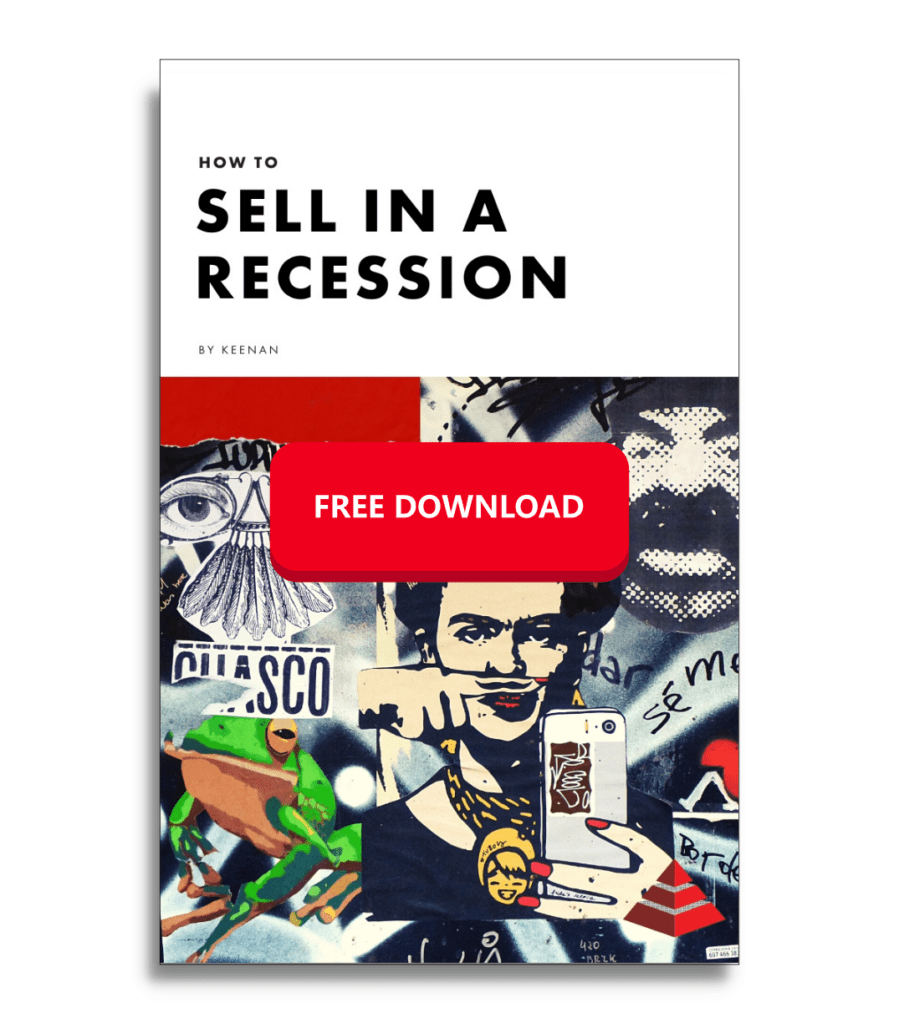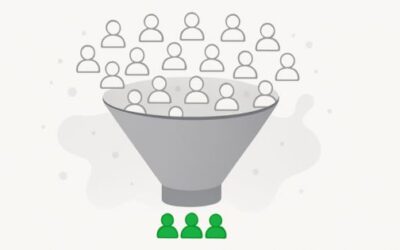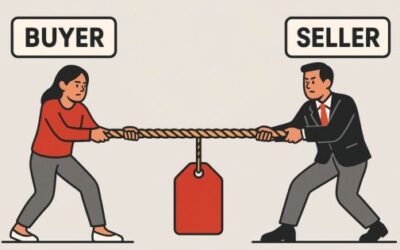You don’t need to be liked to sell. You don’t need to be liked to have credibility. Watch this talk from INBOUND 2018 and learn why.
What really drives customer decisions?
Put yourself in the buyer shoes. People buy from people they like, not so fast my friend. If they don’t like you and there’s no value – I’m not buying. I’m pissed off, I don’t like you, you wasted my time, I’m irritated and you have no value to me, so I want nothing to do with you. Just go away. But if they like you and have tons of value – yes! let’s have a beer. I love you, you’re awesome, that’s your favorite client right? You love them, they love you, they buy from you guys.
What about when there’s no value but they like you? This is the no, with a smile. This is your Uncle Bernie’s multi-level marketing scheme. You love your uncle Bernie but no you are not going to join his multi-level marketing scheme because there’s no value right? I’m not buying. The next one, is there’s tons of value, I don’t like you, I don’t care. I’m still buying. It’s all about value.
Value Sells: Customers Buy Value
This is one of the biggest myths told to salespeople for the last 150-200 years. People buy from people like, no, they don’t. We buy for value.
I could run up right now and pop one of y’all in the face and call your mother all these dirty names and if I had a Ferrari Enzo and I was going to sell it to you for $50,000 you’d buy it because you know that suckers worth a half a million dollars. You’ll take it and spin around and sell it for $450,000 and come back and say I’ll take a punch in the face that any single day. It’s about value but yet we run around trying to be liked! Stop it. Provide value.
Buyers Don’t Care About You
Nobody gives a shit about you or your company and it’s the truth.
We don’t care about you because we’re about value. I want the value that comes. Why don’t we give a shit? Because, salespeople are pesky. I read your pathetic emails I see you’re pathetic cold call campaign. I see it, I read it, and it makes me want to throw up in my mouth. No, you can’t fifteen minutes of my time to hear about the cool features of your little product. I’m not interested in hearing how your company is on the Inc. 500 for the seventh year in a row, I don’t care.
How Not to Email
It’s time we put our customers first and let me give you an example of why. Here’s a real email that I got trying to sell me:
Subject Line: I love Expense Reports
Body: Said no one ever try our free test drive to learn more about easy expense repost from your mobile phone.
<Free Trial Link>
<Demo Videos>
<Additional Links>
Jim, would you have time to chat for 5-10 minutes next week to see if we can help your team at a Sales Guy?
Guys, this is a big company that sent this I’m being nice, normally I call out the company but I’m being nice today. That’s a big company and they sent that.
Problems With Generic Pitches
It’s not just them look at this one:
Hey Jim,
I wanted to provide you with a free 30-day trial to exercise these engagement-driven webinar platform.
<Link>
If you have any questions or would like to set up a more personal call please let me know!
You know this came in, interrupted my day, and I’m going to stop everything to go sign up for a 30 day trial. I have no clue what this is but I think I want to do it, seems like fun.
I’ve been looking for an escape, I’ve been looking something else to do. I don’t like this proposal I’m putting together to a new client. I’m gonna stop making money right now so I can spend time on your free trial of something I have know clue what it is but hey, I’m in. This is the state of sales.
Customer-centric Selling: Put yourself in the shoes of your buyer.
If you receive that, what would you do with it? Would you buy your own product? The answer is probably not, probably wouldn’t even open the damn thing. But you’ve been trained to do that and sales leaders, you trained them to do that. You created this monster, and now we have to fix it. Now, we have to put the customer first.
We practice customer-centric selling and putting the customer first by starting everything with a problem.
The PIC: Mastering Problem-Centric Sales Techniques
We buy to fix problems. This is where the Problem Identification Chart (PIC) comes in. This is how you structure your ability to become a problem-centric seller, a customer-centric seller and build problem-centric selling organizations.
You have to start to ask yourself: ‘what problem or problems does my product or service solve?’ We all know, every company, at least in America, was started in a garage or at a bar on a bar napkin right? But, when they came up with this idea nobody wrote features on a bar napkin. The founder recognized that there was a problem – they were sitting in a garage or at a bar saying things ‘you know what I hate, you know what I can’t stand, you know what I can’t do, you know what I wish I could do?’
They recognized there was a problem that drove them insane they said ‘I’m gonna fix that thing.’ That’s how the company started. As the company grew, more and more incompetent people started joining the company and the brilliant founders got washed out, everybody started talking about the features, they shifted. Something happens along the way and all they want to do is talk about the features, they lost sight of the problem. Get back to basics.
PIC: Problems
List in that column all the problems: the business and technical problems your product and service solves. Then from there, list the impact of those problems. The problems are what causes the pain but the impact is what we buy on.
PIC: Impacts
It’s the impact that drives the motivation, it’s the impact that’s the value. My problem is only a problem based on the impact it has on me or my organization and the greater the impact the greater probability I’ll spend money.
PIC: Root Cause
Finally, the root cause, what is causing the problem, why does the problem exist in the first place and why is that important? It’s important because it’s the way you create credibility. Ever been to the doctor and the doctor is like ‘yeah you have this rash or you have this’, and you ask ‘well, how did I get it?’ And the doctor says ‘well we’re not sure.’ How many of you like that answer?
Credibility through Diagnosis
Instead the doctor says ‘oh it’s caused by this, this, and this’ or ‘we’ve learned that it’s this’, they get all the credibility in the world. Who do you think is better prepared to fix it the one who diagnosed it or the one who diagnosed it AND knows what causes it? That needs to be you.
Look at the products and services you have, do a PIC for each one of those. You have five, maybe ten at the most, major problems that they solve and you have the impact and any of the root causes. Guess what? You now use this for all your marketing and all your calls. You have to use that to get your buyers to acknowledge they have a problem.
Problem-Centric Emails
Consider this email:
Hi Elle,
We’ve found a that many organizations struggle with <problem>, and because of that it’s causing <impact>.
If you’re struggling with this challenge, I’d like to suggest 30 minutes to discuss how we may be able to address you issues, what’s causing them <root cause> in order to create <outcome>.
If I’m having that problem, what is the probability of me or someone like me who’s suffering with that problem gets back with you. It’s much higher. If I’m having the problem I am more inclined to discuss it with you, I am more inclined to respond to you. The more descript and the greater the impact, the more inclined I am to talk with you. If I didn’t know this was a problem that exists, if I didn’t know this was a real problem, I’m even more inclined.
Sales is like baseball – nobody bats 1.000, nobody bats .900, nobody bats .800, if you can win 30-35 percent of your deals, you are an all-star. If you are responsible for closing 20, 30, 40, 50 deals a year and you can bat .350 or you can close 30 times, you’re doing a good job. Doing this can change your batting average and your winning average from 25% to 35%. This is going to get you one, two, maybe three more inquiries that you wouldn’t have gotten before because you’re focusing on them.
Salespeople Are Change Agents
Now that we understand that we need to problem-centric, keep in mind it’s about change. Now that we understand that it’s about them and it’s about a problem, remember at the root of every single sale you will ever make is change. Salespeople are change agents. We don’t buy anything unless I don’t like where I am today, something’s not working for me today, I want to change.
We become change agents. We have to change from something to something else. We have to find the problems. We have to understand what’s going on and we better damn well know where they are and where they’re going.
This is critically important, if we’re change agents, we have to help the customer see the transition, see the change, see the value, and see the benefit. If we can’t we aren’t going to influence the sale, we’re not going to control the sale, we’re not going to make the sale.
Influence the Sale
It’s your job to influence the sale and if you don’t know why they’re buying then you’re not influencing. This is how you become an influencer, this is how you influence the sale – current state, future state, and the Gap in between. That’s the value.
It’s not that you can’t sell, it’s that you can’t diagnose. You have to be able to diagnose the problem just like a doctor. If I have a doctor who can’t diagnose me there’s no freaking way he’s going to prescribe me any freaking solution. If you can’t diagnose what I got, you ain’t touching me. Same thing with sales, if you can’t diagnose then why are you offering me a solution, how do I know what’s going to work, how do I know what’s going to solve my problems, how do I know how it’s going to affect the impact that I’m currently having?
Acting as a Problem Finder
We need to learn how to discover and be problem finders, that is our number one job. Go back to the PIC, here are the set of problems that I know my product or service solves. I’m going to go find one of those suckers, maybe I’m going to find two or three and I’m going to get the customer to admit they have those problems and then we’re going to go on a journey together.
Current State Analysis
How do I do that – I start with the current state. There are four elements to the current state. First and foremost, start asking questions around the physical and literal current state. What’s going on? What’s happening? How many people do you have (as it relates to the product)? What problems or issues are you having?
Problem Environment
Next, you want to ask about the problem. You want uncover the current problem, then you want to uncover the current impact, then you want to uncover the root cause. Now, because you’ve written this down, you have a guide to tell you what to ask and what to look for. Use that guide and start looking for those specific problems that you know your company, product, or service can fix.
Emotional State of the Buyer
Then the last one is the emotion. Try to assess the emotion. Are they pissed, angry, frustrated, scared? What emotion is going with that and capture it all.
Future State
Now, flip this script, where do you want to go, what are your goals, how much are you’re trying to achieve, what are you trying to save, what kind of efficiency are you trying to create? You want to move them into the future state.
Most salespeople start in the future state right away because that’s what they want to sell. If I don’t know the current state I’m the Gap, the compare and contrast. I don’t know where they are so I don’t know the Gap. If I don’t know the Gap, I don’t know the value.
You want to get that entire current state as deep as you can so you understand why they want to buy.
Why Should They Buy?
I sit down with salespeople and sales teams all the time and I’ll be going through a pipeline interview and someone will say ‘oh yeah the customers ready to buy, they’re super excited they love this feature, they’re ready to do this blah blah blah blah’ and I’ll say ‘great why do they want to buy?’ ‘oh because they want a new system.’ ‘Why do they want a new system?’ ‘Well they don’t like the one that they’re using.’ ‘Why don’t they like it?’ ‘The one they have it doesn’t work.’ ‘Why doesn’t it work?’ And then they start making shit up.
‘How have you influenced the sale if you have no idea why they want to buy? What makes you think they’re going to buy?’ ‘Well they said so.’ ‘Why do they say so?’
Don’t Trust a Customer
I don’t trust my customers. I love my customers. I love my prospects. I don’t trust them.
I know before they know that they should buy. That’s when you know you’re winning. When a customer says no and you can look at them and say ‘what are you crazy?’ and you can defend it. The way you defend the value is you take the current state, re-iterate the future state, and calculate the value. Provide them with a justifiable purchase.
Once you do that, you want all of that in the CRM. Every single piece – the whole current state, the entire future state, what the Gap is, what their intrinsic motivations are, why they want to buy. It all needs to be in there so when the sales managers are doing pipeline review and ask ‘why do they want to buy, what’s the problem, what’s the impact of that problem, how’s it affecting them, what happens if they don’t do anything?’ You should be able to answer all those questions. You look like an expert on that company.
Sell the Outcome
The outcome is what you’re selling, the future state, the gap is where the value is.
You’re selling the outcome. If you do this right every objection and every challenge goes away. A customer goes dark – you no longer have to send those stupid pathetic emails ‘oh you’ve gone dark so either you’re really really busy or you being chased by a hippo. Call me back. You guys know what I’m talking about don’t you? Look you have to write those emails because you don’t know the value of what you’re selling.
But, what if a Prospect Ghosts?
If you did problem-centric selling correctly and someone goes dark you can say ‘hey, I’m confused last we talked we discovered that you’re seven million dollars behind your run rate of getting to 28 and 40. Your sales teams were not being able to consistently execute because your structured in a way that doesn’t allow people to talk to create common themes or create common methodologies. Understanding that your goal 48 and 20 is running low on time, I’m confused why I haven’t heard from you. Have you already solved it? Or should we take a few minutes to talk about where you are in this process?
Who am I talking about in that email? Them. I’m taking their shit and putting it back on them. What do you mean you’re not calling me back, you’re dying here this isn’t about me I got plenty of customers I can call. You told me you’ve got a problem that you need to fix – here’s the problem. Why are you not getting back to me?
Handling Objections
Lack of features ‘I really really like this but you don’t have this feature or that feature and it’s really bothering me and we really need this feature.’ If you understand their business and understand the problems you should be able to say ‘you know what you’re right, understanding what you told me that feature is critical because without it you can’t do these three things and so we shouldn’t do this.’
Or you’re like ‘wait, I’m confused you told me do you have these four problems, that feature will only affect this little tiny piece, you said your end goal was to make this happen that feature doesn’t affect the end goal. Why are we talking about this feature? Have I missed something?’
You don’t defend you, you make them defend their decision that they need that feature. You make them defend it, you don’t have to say well the feature we use is this or that or I’ve talked to engineering and we’re gonna try to get that in by next quarter so if you just buy and hang on.
No, you challenge the customer to explain why that’s critical to the buying decision based on what they told you the problem is.
Price Objections
What about overcoming price objections? ‘yeah I don’t know, you’re a little expensive, I didn’t budget for this, it’s too much money.’ If you want to overcome price objections find the value and then turn it around on them. ‘But wait, you said that you’re losing $250,000 a year, we can make that go away and it only costs $3,000 a month. I’m confused, why are you saying this is too expensive?’ Then shut up, just shut up and let the customer squirm and try to explain to you why spending $3,000 a month is too expensive.
Whatever they say, then you address it. It could be a budget issue, but no it’s not too expensive and I’m not going to lower my rate because that’s a damn good deal. This problem-centric selling helps you flip the script and makes your customer defend themselves, puts a customer at the center and allows you to influence the sale and not be an order-taker.
Problem-centric selling and customer-centric selling puts the customer first, not you. That’s what it’s about. It changes everything. You now become an influencer. You get it done. You make it happen.



0 Comments